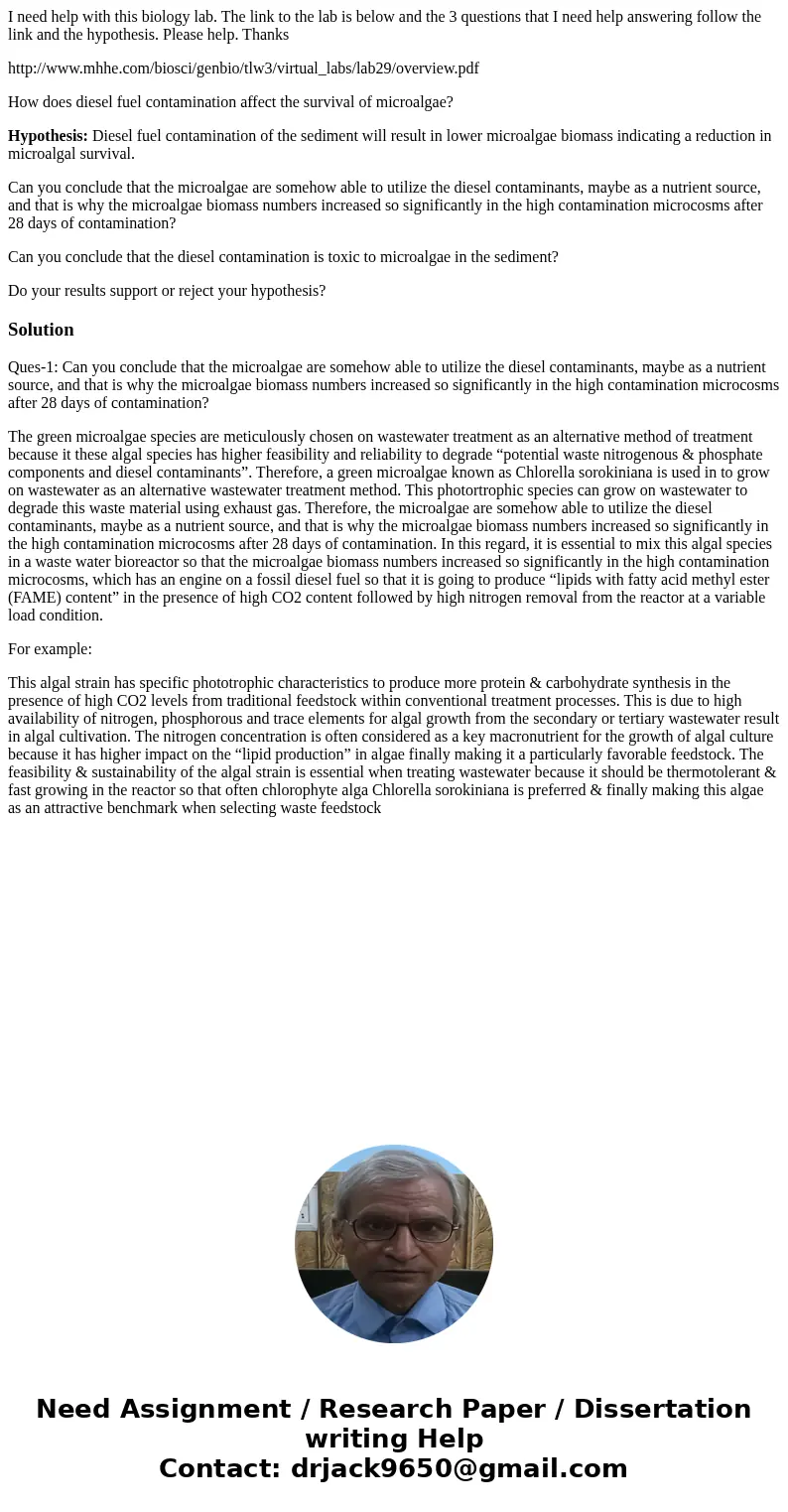I need help with this biology lab The link to the lab is bel
I need help with this biology lab. The link to the lab is below and the 3 questions that I need help answering follow the link and the hypothesis. Please help. Thanks
http://www.mhhe.com/biosci/genbio/tlw3/virtual_labs/lab29/overview.pdf
How does diesel fuel contamination affect the survival of microalgae?
Hypothesis: Diesel fuel contamination of the sediment will result in lower microalgae biomass indicating a reduction in microalgal survival.
Can you conclude that the microalgae are somehow able to utilize the diesel contaminants, maybe as a nutrient source, and that is why the microalgae biomass numbers increased so significantly in the high contamination microcosms after 28 days of contamination?
Can you conclude that the diesel contamination is toxic to microalgae in the sediment?
Do your results support or reject your hypothesis?
Solution
Ques-1: Can you conclude that the microalgae are somehow able to utilize the diesel contaminants, maybe as a nutrient source, and that is why the microalgae biomass numbers increased so significantly in the high contamination microcosms after 28 days of contamination?
The green microalgae species are meticulously chosen on wastewater treatment as an alternative method of treatment because it these algal species has higher feasibility and reliability to degrade “potential waste nitrogenous & phosphate components and diesel contaminants”. Therefore, a green microalgae known as Chlorella sorokiniana is used in to grow on wastewater as an alternative wastewater treatment method. This photortrophic species can grow on wastewater to degrade this waste material using exhaust gas. Therefore, the microalgae are somehow able to utilize the diesel contaminants, maybe as a nutrient source, and that is why the microalgae biomass numbers increased so significantly in the high contamination microcosms after 28 days of contamination. In this regard, it is essential to mix this algal species in a waste water bioreactor so that the microalgae biomass numbers increased so significantly in the high contamination microcosms, which has an engine on a fossil diesel fuel so that it is going to produce “lipids with fatty acid methyl ester (FAME) content” in the presence of high CO2 content followed by high nitrogen removal from the reactor at a variable load condition.
For example:
This algal strain has specific phototrophic characteristics to produce more protein & carbohydrate synthesis in the presence of high CO2 levels from traditional feedstock within conventional treatment processes. This is due to high availability of nitrogen, phosphorous and trace elements for algal growth from the secondary or tertiary wastewater result in algal cultivation. The nitrogen concentration is often considered as a key macronutrient for the growth of algal culture because it has higher impact on the “lipid production” in algae finally making it a particularly favorable feedstock. The feasibility & sustainability of the algal strain is essential when treating wastewater because it should be thermotolerant & fast growing in the reactor so that often chlorophyte alga Chlorella sorokiniana is preferred & finally making this algae as an attractive benchmark when selecting waste feedstock

 Homework Sourse
Homework Sourse